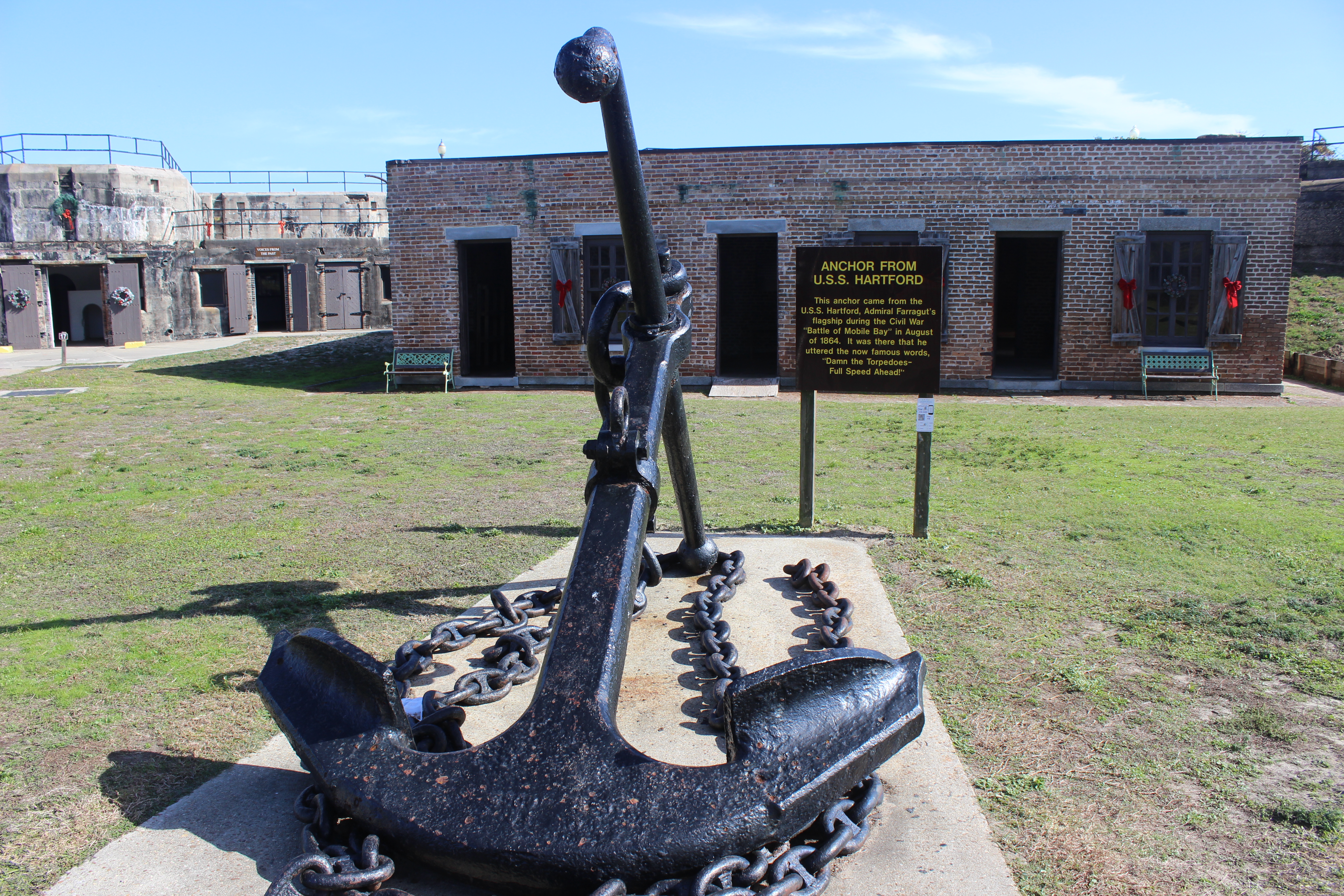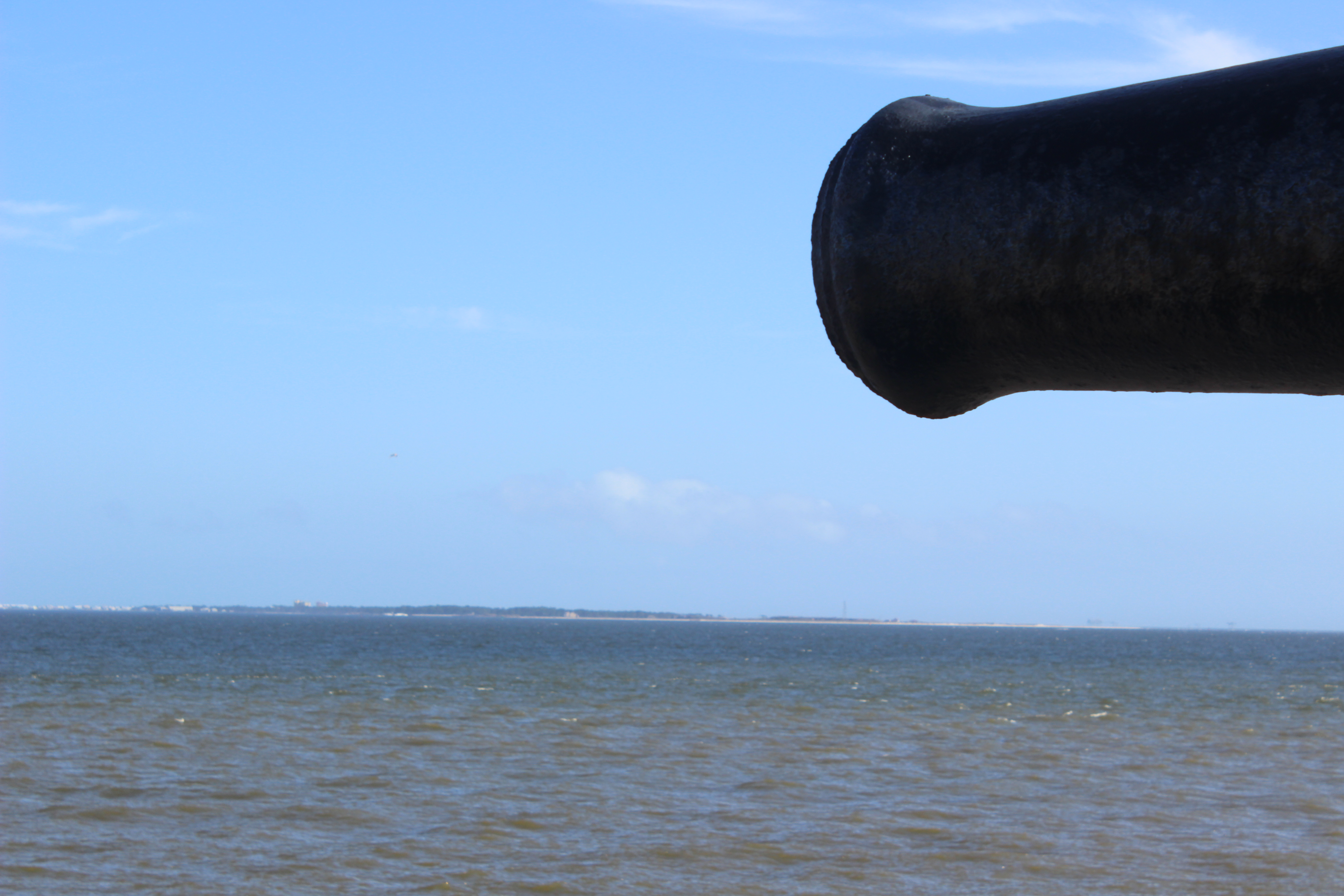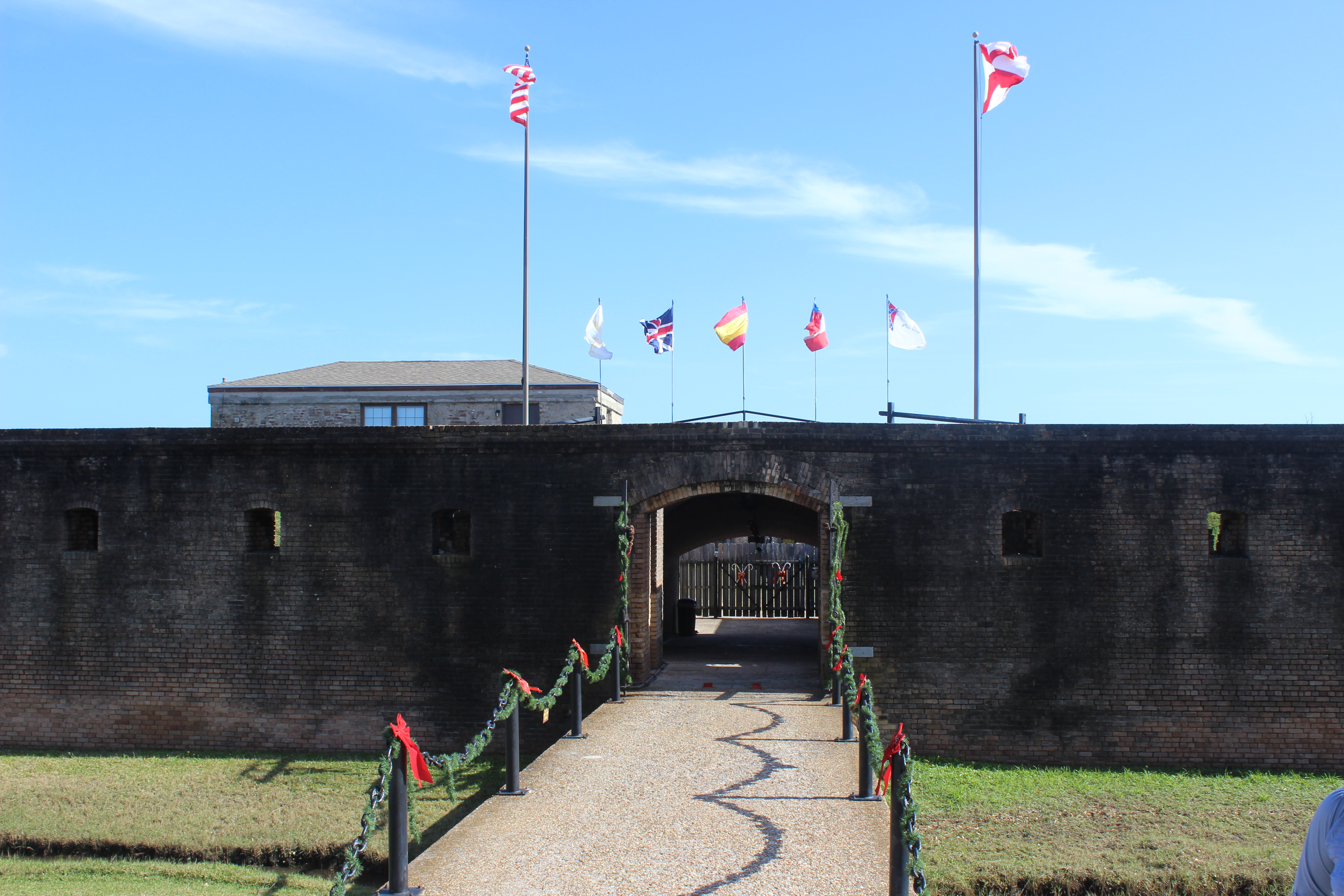ECW Weekender: Fort Gaines

On the tip of Dauphin Island, Alabama, sits the impressive brick and mason Fort Gaines, a silent sentinel of Mobile Bay. In the parade ground of the fort is displayed the anchor of the USS Hartford the flagship of Admiral David Farragut. The fort now encloses the anchor of the ship that caused the downfall of what that fort defended. An interesting symbolism.

Fort Gaines, named after Edmund Pendleton Gaines, a United States soldiers that served admirably in the Seminole and Mexican-American Wars, was one of three forts (Fort Morgan being the largest and situated across the mouth of the bay from Fort Gaines) that guarded the entrance to Mobile Bay, Alabama. By August 1864, Mobile was one of the last ports in the hands of the Confederates.
Five days into that month, Admiral David Farragut would sail toward and past the two forts guarding the entrance and utter his now infamous saying, “Damn the torpedoes! Full speed ahead!” This famous quote, which might have been said in slightly different verbiage, was in response to Union naval vessels slowing down under the guns of the Confederate fort after one of the ironclads in the fleet had sunk after hitting a torpedo. A torpedo in Civil War parlance referred to an underwater mine.
Although the brick and mason forts did their best to repel the Union navy, the staunchest defender of the bay was the Confederate ironclad the CSS Tennessee, commanded by Admiral Franklin Buchanan, the same commander of the CSS Virginia, when it dueled with the USS Monitor in 1862. After three hours of fighting, the Confederate ironclad was forced to surrender.
Although, Fort Morgan held out for a few weeks, Fort Gaines surrendered on August 8, three days after the Union had successfully sailed into Mobile Bay. Seeing that resistance to a joint naval-army assault, in which Union ground troops outnumbered his 4-1, the Confederate commander, Colonel Charles D. Anderson commanded 818 men at last count when he surrendered in violation of his superior’s orders to hold to the last man.

Fort Gaines is now run by now a state park on Dauphin Island and is situated on the eastern tip of that island and the fort was established in 1821. Named for Edmund Pendleton Gaines and is part of the Third System of Fortifications which was a direct result of the War of 1812 in which Edmund P. Gaines, played a prominent role.
A visitor today can walk the impressively maintained and intact ramparts, visit the museum which details history from the French colonial period of the 17th century through its history in the 20th century, and also tour other components of the fort. An entrance fee is collected to visit the fort. Guided tours are available at certain times of the year. Click here to plan your visit.
Though the fort is in great condition, it has been named to the “Eleven Most Endangered Historic Sites” in the United States because of shore erosion. So, maybe follow Farragut’s advice and go “full speed ahead” in planning your visit?

Great sites…. both Fort Morgan and Fort Gaines are worth the trip!
Fort Gaines might have been the first battlefield I ever visited, and I wasn’t even there for the Civil War history! Before Covid, the Society of Creative Anachronism (SCA) hosted an annual weekend event inside the fort. The SCA is a non-profit education organization devoted to telling the story of the medieval times. My husband and I have been attendants and participants in the event. It’s interesting to see the place crawling with SCA folks in their medieval garb. It’s even cooler to camp out in one or the bastions or power magazines for the night 🙂 .
It’s definitely worth a visit, well preserved, and well interpreted. I may be biased, but it’s my favorite fort so far.
Not just symbolism…
After everything of military use on Pensacola Bay was put to the torch in Spring of 1862, the Confederate Army abandoned Fort Barrancas, the Advanced Redoubt, and the ruined Fort McRee, never to return. And the U.S. Navy, on station near the entrance to Pensacola Bay since the Buchanan Administration, simply ferried soldiers across from Fort Pickens and took possession of all the abandoned facilities already mentioned, as well as the Navy Yard and Pensacola City. And with New Orleans under Federal control in May 1862, attention in the Gulf turned to Mobile Bay. Powerful Fort Morgan was protected by Fort Gaines and an unknown number of Rebel gunboats; and there were rumors of fields of reliable torpedoes anchored just below the surface of Mobile Bay. The sum of these strong defences prevented U.S. Navy warships from entering the Rebel-controlled bay.
Believing his fleet of mortar-sloops were of no value after the conquest of New Orleans, Commander David Dixon Porter was detached from operations with Flag-officer Farragut and “sent” to the mouth of Mobile Bay. [Porter was ordered to Ship Island; and he may have sent himself to Mobile Bay.] In early May 1862, from a safe distance in the Gulf of Mexico, he lobbed 213-pound explosive shells against the Rebel fortifications, primarily Fort Gaines. Used up nearly all of his available 13-inch mortar shells. So when Porter was called back into the Mississippi River to assist Farragut against Vicksburg… there was not much Porter could do. So, in a sense, Fort Gaines, merely by acting as “target,” helped prevent the timely conquest of the Gibraltar of the Confederacy. And allowed the Confederate war effort to continue in the west for an additional year.
One of the first CW sites I visited, my dad afterward made me a birthday cake in the shape of Fort Gaines!
Small correction, Phil, but a common misconception: Franklin Buchanan was not an Admiral and did not command the CSS Virginia in the battle with the USS Monitor. He was appointed Flag Officer in command of Confederate naval units in Hampton Roads. (Admiral ranks would be established later in 1862.) He was wounded on March 8, 1862, while Virginia was sinking the USS Congress and therefore in the hospital on March 9 during the engagement with Monitor. The Virginia was commanded against Monitor by the Executive Officer, Lt. Catesby Jones.